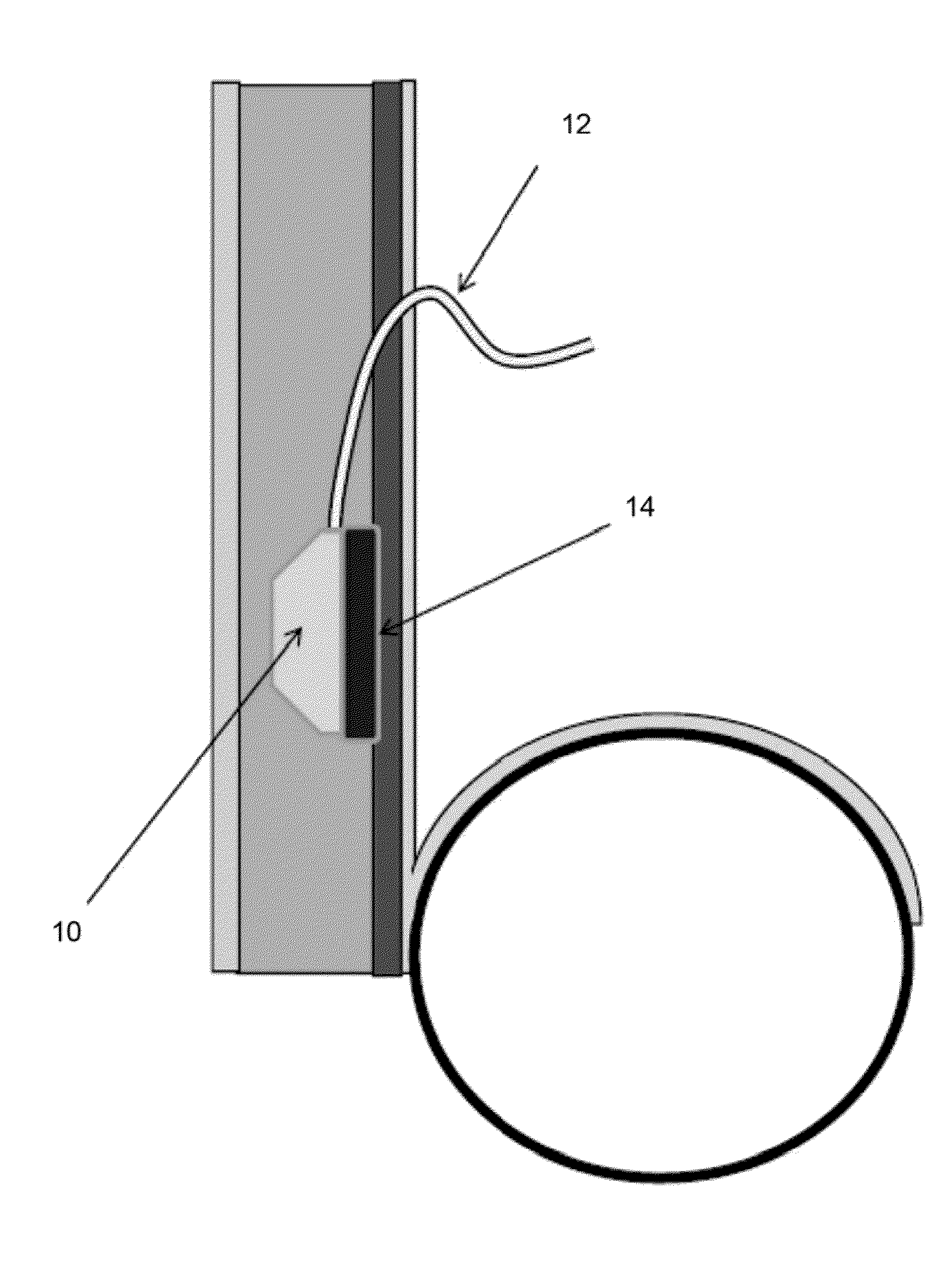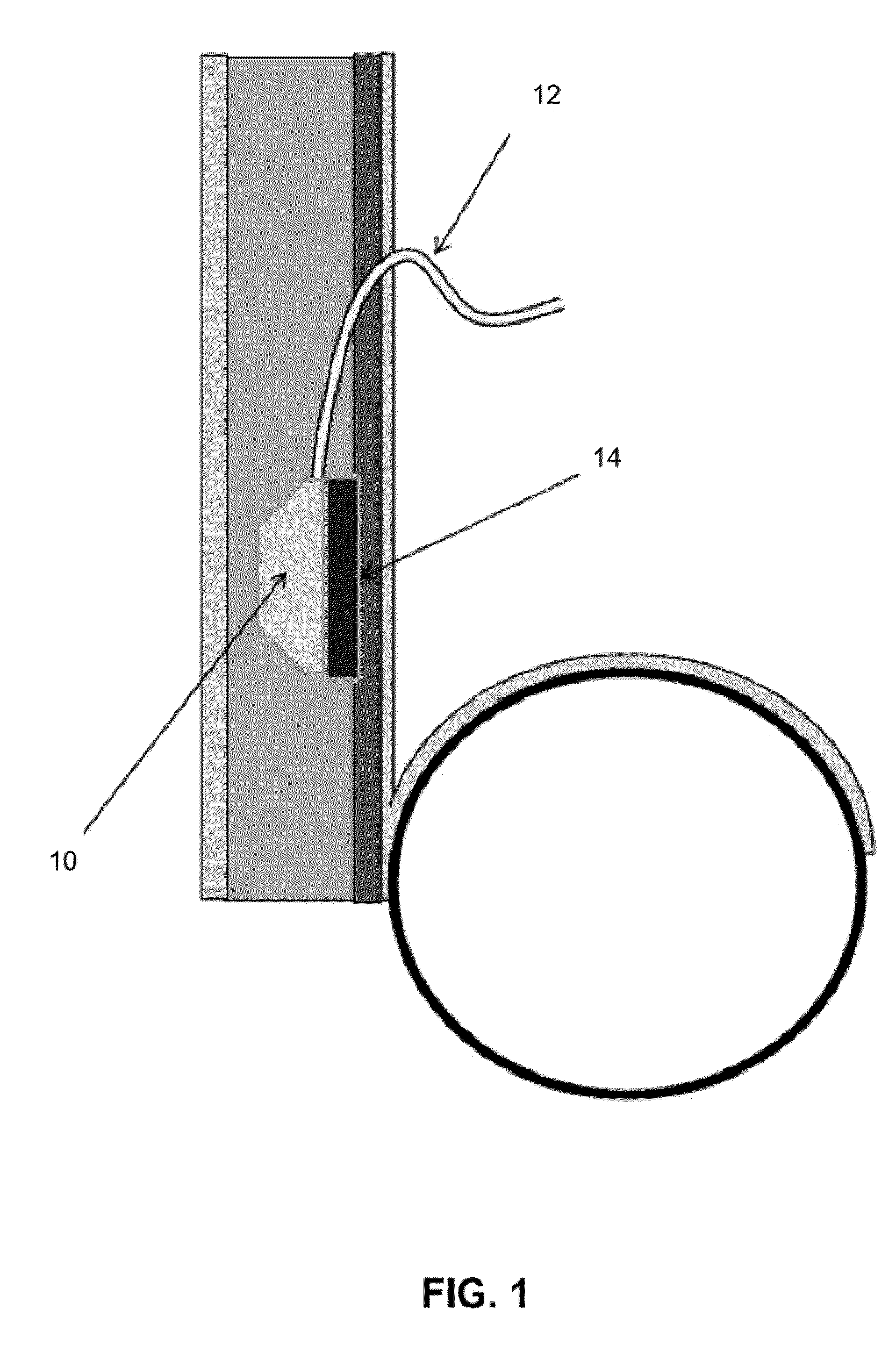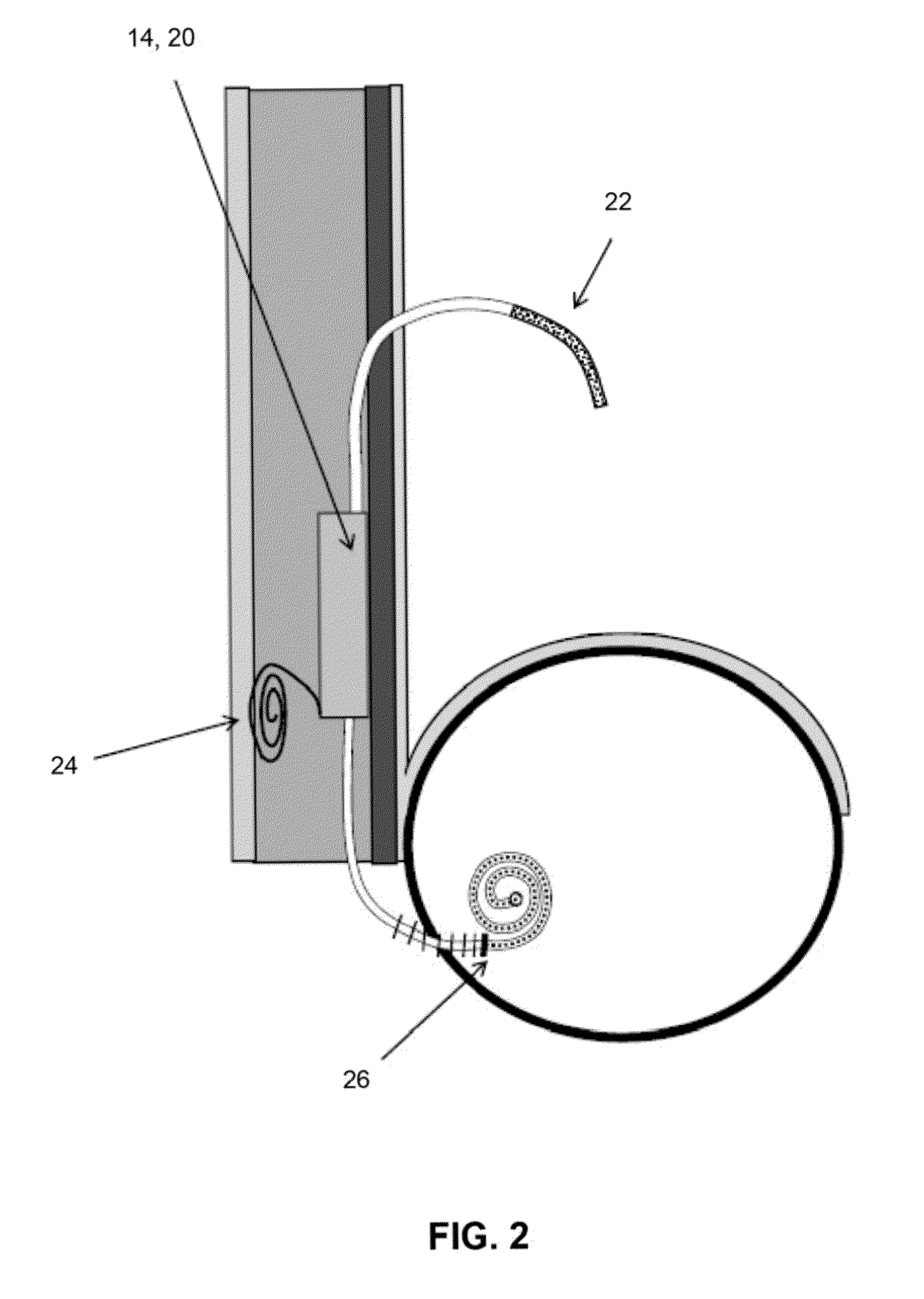Method and apparatus for automated active sterilization of fully implanted devices
a fully implantable device and active sterilization technology, applied in the field of medical devices, can solve the problems of high infection risk of devices, many fields have stagnated, and cannot be fully implanted, and achieve the effect of preventing infection
- Summary
- Abstract
- Description
- Claims
- Application Information
AI Technical Summary
Benefits of technology
Problems solved by technology
Method used
Image
Examples
Embodiment Construction
[0010]FIG. 1—Side view of the catheter sterilizing element 14. In this illustration, a modification to a typical subcutaneous peritoneal port 10 is shown. In this instance, though, the device is shown equipped with an implanted sterilization element 14 (optionally inductively rechargeable) which contains all the circuitry, etc. required to provide effective sterilization of the catheter 12 and / or port 10. In this illustration the sterilization element is shown as manufactured into the device. In addition the sterilization element 14 may also be a device which may be coupled with the implantable device at the time of implantation. In this illustration, as well, an intra peritoneal catheter 12 is shown connected to a subcutaneous port 10, but may include: an IV catheter port, a CNS catheter port, a bladder catheter port, a PICC catheter, a central venous catheter, etc. There may be elements within the catheter 12, as well, to transmit energy, etc., for example, fiberoptics to transmit...
PUM
| Property | Measurement | Unit |
|---|---|---|
| ultrasonic energy | aaaaa | aaaaa |
| current/voltage | aaaaa | aaaaa |
| freezing temperatures | aaaaa | aaaaa |
Abstract
Description
Claims
Application Information
 Login to View More
Login to View More - R&D
- Intellectual Property
- Life Sciences
- Materials
- Tech Scout
- Unparalleled Data Quality
- Higher Quality Content
- 60% Fewer Hallucinations
Browse by: Latest US Patents, China's latest patents, Technical Efficacy Thesaurus, Application Domain, Technology Topic, Popular Technical Reports.
© 2025 PatSnap. All rights reserved.Legal|Privacy policy|Modern Slavery Act Transparency Statement|Sitemap|About US| Contact US: help@patsnap.com



